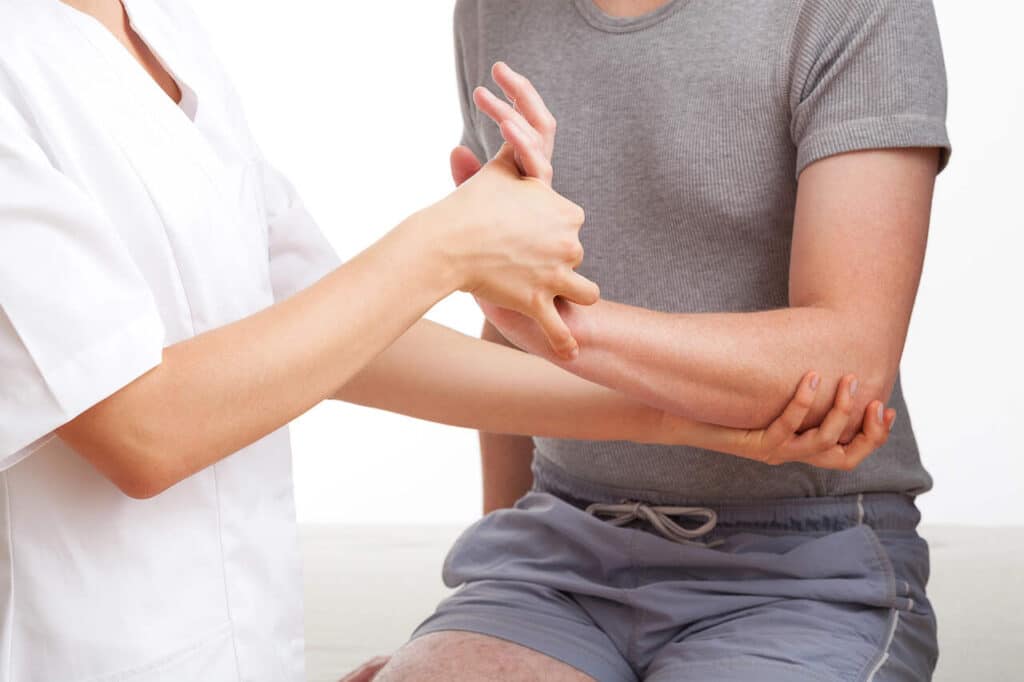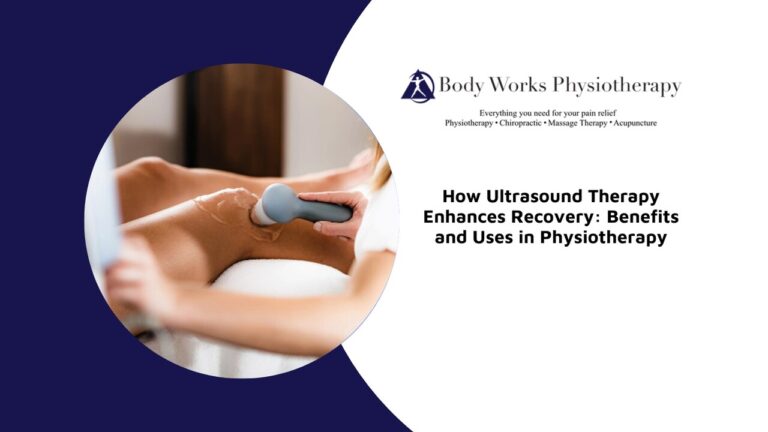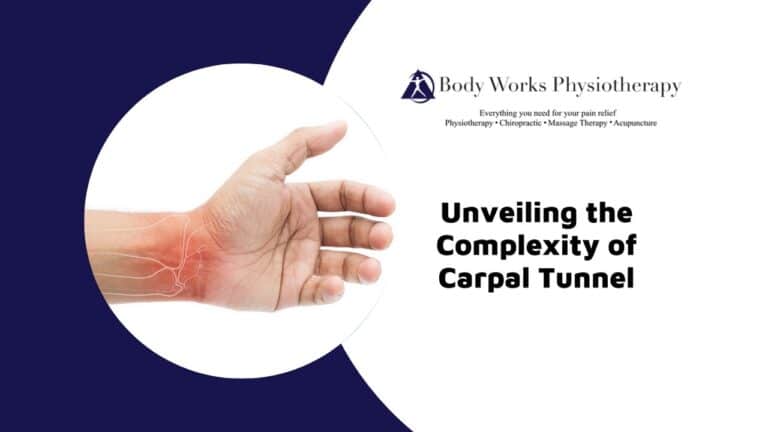
Did you know that one in four of all workers will struggle with a hand injury in the workplace? This is a problem that affects millions of people, but it doesn’t have to be this way. In this post, we’ll explore tips for treating and overcoming hand injuries with physiotherapy care.
Common Hand Injuries
Hand injuries and issues can significantly impact daily life. Here are some common hand injuries and issues, along with their causes and symptoms:
- Carpal Tunnel Syndrome: Caused by repetitive hand movements and health conditions like diabetes. Symptoms include numbness, tingling, and weakness in the hand, often worsening at night.
- Trigger Finger: Caused by repetitive gripping and inflammatory conditions. Symptoms include pain, stiffness, and a locking sensation in the finger, which may suddenly pop straight.
- De Quervain’s Tenosynovitis: Caused by overuse of the wrist and repetitive movements. Symptoms include pain and swelling near the base of the thumb, with difficulty grasping or pinching.
- Fractures: Caused by trauma, falls, and sports injuries. Symptoms include severe pain, swelling, bruising, and inability to move the hand or fingers, sometimes with deformity.
- Arthritis: Caused by wear and tear or autoimmune conditions. Symptoms include joint pain, stiffness, swelling, and reduced range of motion in the hand.
- Tendonitis: Caused by overuse and repetitive movements. Symptoms include pain and inflammation of the tendons in the hand and wrist, worsening with movement.
- Sprains and Strains: Caused by overstretching or tearing ligaments or muscles. Symptoms include pain, swelling, and limited movement in the affected area.
How Physiotherapy Helps with a Hand Injury
Physio can significantly help with a hand injury. A hand physiotherapist specializes in treating injuries and conditions affecting the hand and wrist. They employ manual therapy techniques, exercises, and massage therapy to restore function and alleviate pain.
- Comprehensive Assessment: Physiotherapists conduct a thorough evaluation to understand the injury and create an individualized treatment plan. This plan focuses on pain relief, improving strength, and ensuring proper healing to prevent future injuries.
- Joint Mobilization: Techniques are used to improve joint function and range of motion.
- Targeted Exercises: Exercises are prescribed to strengthen the muscles and improve the flexibility of the hand and wrist.
- Pain Management: Techniques such as acupuncture, shockwave therapy, and bracing are used to manage pain and reduce inflammation. Massage therapy is often incorporated to enhance pain relief and circulation.
- Functional Training: Helping you regain the ability to perform daily tasks and occupational activities is essential.
- Scar Management: Specific treatments are provided for people who recently underwent surgery or those with significant scar tissue to improve flexibility and appearance.
- Ergonomic Advice: Therapists offer guidance on modifying daily activities and work tasks to prevent further strain on the hand.
- Home Exercise Programs: You receive exercises to perform at home to maintain progress between therapy sessions.
- Education and Training: Individuals are educated on proper hand care techniques to prevent future injuries and manage existing conditions effectively.
Whether you’re dealing with acute injuries or chronic pain, a detailed treatment plan designed by a professional can aid in injury prevention and expedite recovery.
How Do You Know if a Hand Injury Is Serious?
A hand injury is considered serious if you experience severe pain, swelling, or bruising, or if there’s an obvious deformity, inability to move the fingers or hand, or numbness. These symptoms warrant immediate medical attention. A physiotherapist can assess the severity of your injury and incorporate appropriate manual therapy techniques into your treatment plan for optimal recovery.
- Signs of Infection: Redness, warmth, and fever accompanying a hand injury can indicate an infection that requires prompt treatment.
- Loss of Function: Difficulty in performing simple tasks such as gripping or lifting objects may suggest a severe injury.
- Persistent Symptoms: Pain and swelling that do not subside with initial first aid measures indicate the need for professional evaluation.
- Previous Injuries: Recurring issues in the same area may signify underlying problems needing professional care.
When to Start Physio After an Injury
It’s advisable to start physio as soon as possible after an injury, ideally within the first 48 hours, especially for acute injuries. Early intervention with physiotherapy can help manage pain, reduce swelling, and improve mobility. Your physiotherapist will develop an individualized treatment plan that addresses your specific injury and helps prevent further complications.
Early assessment can help determine the severity of the injury and the best course of treatment. Starting therapy early can prevent joint stiffness and muscle atrophy, common issues following hand injuries. Physiotherapists can provide advice on safe levels of activity and movements to avoid further injury. Regular sessions allow for close monitoring of the healing process and timely adjustments to the treatment plan.
The Healing Timeline for Hand Injuries: Expediting Recovery
The healing time for a hand injury varies depending on the severity and type of injury. Minor injuries might heal within a few days to a couple of weeks, while more serious injuries, such as fractures or ligament tears, may take several weeks to months.
A well-structured, detailed treatment plan from a physiotherapist, including massage therapy and targeted exercises, can facilitate faster recovery and effective pain management. To heal a hand injury faster, follow these steps:
- Seek Early Physiotherapy: Start physiotherapy as soon as possible to reduce pain and improve mobility.
- Follow an Individualized Treatment Plan: Adhere to the exercises and manual therapy techniques recommended by your physiotherapist.
- Rest and Protect the Injury: Avoid activities that could exacerbate the injury, such as repetitive motions or heavy lifting.
- Consistent Follow-Up: Regular check-ins with your physiotherapist ensure the treatment plan remains effective and adjusts to your progress.
- Adaptive Tools: Using ergonomic tools and supports can help protect the hand during daily activities and reduce strain.
Let Us Guide You Through Recovery
Hand injuries should not be taken lightly. Whether you’re dealing with a recent injury or chronic hand pain, a skilled physiotherapist can develop a personalized treatment plan that addresses your unique needs and helps you regain full functionality.
Don’t let a hand injury hold you back any longer. At Body Works Physiotherapy, our Scarborough team is ready to help you achieve a pain-free and active lifestyle. Contact us today to schedule your appointment and take the first step towards a healthier, more capable you.




